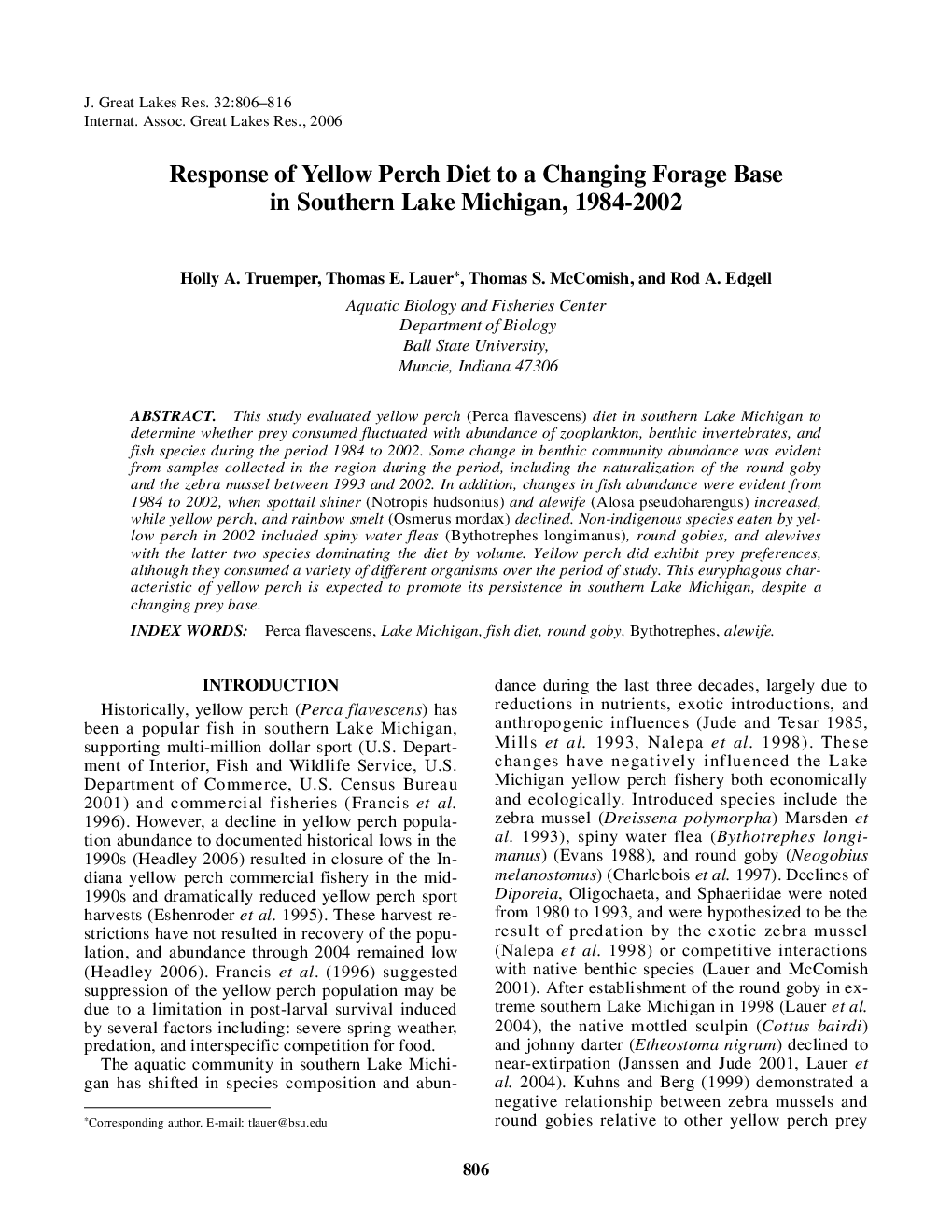| Article ID | Journal | Published Year | Pages | File Type |
|---|---|---|---|---|
| 4398775 | Journal of Great Lakes Research | 2006 | 11 Pages |
Abstract
This study evaluated yellow perch (Perca flavescens) diet in southern Lake Michigan to determine whether prey consumed fluctuated with abundance of zooplankton, benthic invertebrates, and fish species during the period 1984 to 2002. Some change in benthic community abundance was evident from samples collected in the region during the period, including the naturalization of the round goby and the zebra mussel between 1993 and 2002. In addition, changes in fish abundance were evident from 1984 to 2002, when spottail shiner (Notropis hudsonius) and alewife (Alosa pseudoharengus) increased, while yellow perch, and rainbow smelt (Osmerus mordax) declined. Non-indigenous species eaten by yellow perch in 2002 included spiny water fleas (Bythotrephes longimanus), round gobies, and alewives with the latter two species dominating the diet by volume. Yellow perch did exhibit prey preferences, although they consumed a variety of different organisms over the period of study. This euryphagous characteristic of yellow perch is expected to promote its persistence in southern Lake Michigan, despite a changing prey base.
Related Topics
Physical Sciences and Engineering
Earth and Planetary Sciences
Earth and Planetary Sciences (General)
Authors
Holly A. Truemper, Thomas E. Lauer, Thomas S. McComish, Rod A. Edgell,
